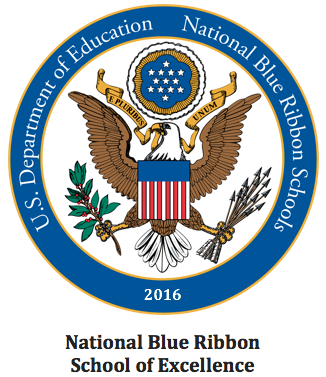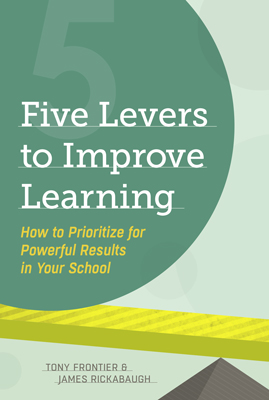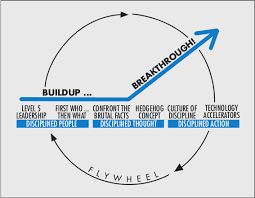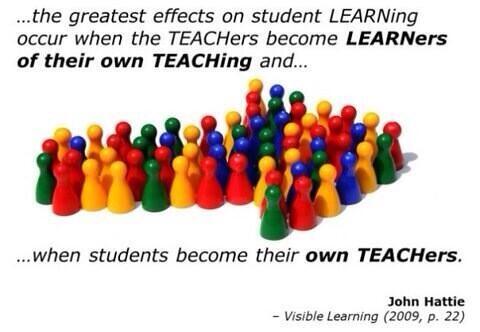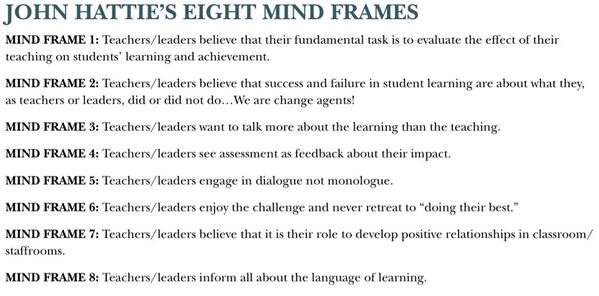Robert Marzano and John Hattie have both reviewed research into what teaching strategies make the biggest difference to students’ results. While they used different methods and terminology, they agreed on these 8 powerful strategies.
Strategy 1: A Clear Focus for the Lesson
 John Hattie highlights how important it is for you (and your students) to be clear about what you want them to learn in each lesson. According to Hattie, teacher clarity is one of the most potent influences on student achievement. Robert Marzano agrees, including lesson goals in his top 5 list of factors that affect how well students do at school.
John Hattie highlights how important it is for you (and your students) to be clear about what you want them to learn in each lesson. According to Hattie, teacher clarity is one of the most potent influences on student achievement. Robert Marzano agrees, including lesson goals in his top 5 list of factors that affect how well students do at school.
Hattie states that lesson goals:
- Clearly state what you want your students to learn
- Can focus on surface or deep learning (or both)
- Must be challenging for the students relative to their current mastery of the topic
- May be grouped (i.e. a single lesson may have more than one goal)
- Need to be shared with the students
Marzano also found that posing questions at the start of a lesson is an effective way to focus students: For example:
- How do you add mixed fractions with different denominators? That’s what you must know by the end of this lesson.
- What is the difference between elements and compounds? …
- Why is Persuasive Essay A better than Persuasive Essay B? …
- When (what period) were Egypt’s great pyramids built? …
Hattie suggests using questions a slightly different way:
- What are today’s lesson goals?
- What do I already know that will help me achieve these goals?
- What actions will I need to do to ensure I achieve these goals?
Strategy 2: Offer Overt Instruction
Robert Marzano claims it is important to explicitly teach your students the things they need to learn. His review of research actually revealed it was the most important factor (teacher controlled) affecting students’ success. You need to tell them what they need to know and show them how to do things they must be able to do for themselves.
John Hattie did not review explicit teaching per se, but he did find that Direct Instruction was very effective. Direct Instruction involves explicitly teaching a carefully sequenced curriculum, with built in cumulative practice.
Furthermore, Hattie highlighted the power of giving students worked examples when explaining how to multi-step tasks. Marzano also highlights the importance of giving examples and non-examples (similarities and differences) of the concept you are teaching. For example, when teaching prime numbers it would be useful to highlight 2 as an example, and 9, 15 and 21 as non-examples to avoid confusion with odd numbers.
Marzano also found that you can explicitly teach deeper levels of understanding by using graphic organisers You should use graphic organisers to show how different ideas were related to each other (e.g. steps, cause-effect, hierarchy, lists, comparisons, etc.).
Neither Hattie nor Marzano believes that great teaching is nothing more than standing out the front of the class and imparting knowledge. However, both agree that telling students what they need to know and showing students what they need to be able to do are essential aspects of teaching.
Strategy 3: Get the Students to Engage With the Content
While it is essential to actively teach students what they need to know and be able to do, it is also important to get them to actively engage with the content.
Marzano and Hattie agree that this starts with students actively linking your newly provided information with their prior knowledge of the topic. Students need to engage with the content as soon as they hear it by:
- Adding it to what they already know, or
- Using it to clarify some of the faulty assumptions they currently hold
Your students can then engage with your information in other ways. Hattie talks about the value of getting kids to take notes. Marzano also found there was great value in having your students take notes, and getting them to work with physical manipulatives. Also, he found that the simple act of asking students to recall information that you have just taught them (i.e. asking basic questions) had a substantial impact on how well they mastered the material. All these strategies are useful, but they only allow students to engage with the material at a surface level.
 Robert Marzano also found several ways for students to engage with the material in ways that help them deepen their understanding beyond surface knowledge. These include the use of graphic organizers that show how information is connected (e.g. steps, cause-effect, in comparison to, hierarchical classification). It also includes the use of analogies, such as:
Robert Marzano also found several ways for students to engage with the material in ways that help them deepen their understanding beyond surface knowledge. These include the use of graphic organizers that show how information is connected (e.g. steps, cause-effect, in comparison to, hierarchical classification). It also includes the use of analogies, such as:
- Persuasive devices are to a writer what tools are to a tradie, or
- The Magna Carta offers citizens what a referee offers a game of soccer.
These are practical strategies that exemplify the higher levels of the SOLO taxonomy (an alternative to Bloom) that Hattie also advocates.
Strategy 4: Give Feedback
It is important that you give your students feedback after they engage with any new material. This:
- Highlighting what is right and wrong, or good and bad about their work
- Helping students to see how they can improve
Robert Marzano highlighted that students need to be given feedback while there is still time to improve (i.e. before finishing a topic or assigning a formal assessment task). John Hattie agreed with this but went further, showing that novice or struggling students need immediate feedback, while more experienced students do better when they receive delayed feedback. Hattie also discovered that different types of students need distinct types of feedback (see How to Give Feedback: The Advanced Guide).
Hattie also highlighted that feedback is a two-way street, where student results tell the teacher the degree to which their efforts are working (or not). When teachers see feedback this way, it has an even larger impact on their students’ subsequent results.
Strategy 5: Multiple Exposures
If you want students to internalize new information, you need to expose them to it several times.
When exploring how to enhance students’ vocabulary, Robert Marzano found that it was critical for teachers expose students to the same word multiple times. When each exposure was coupled with an explicit comment about the word and its meaning, students’ vocabulary acquisition doubled.
John Hattie picks up on the significance of multiple exposures by revealing the critical importance of techniques such as rehearsal and review. Put simply, rehearsal means going over material until you can remember it, while review involves going over things you have learnt previously.
He also stresses the merit of giving students time to practice doing the things they have learned to do. When spaced out over time, Hattie found that having students practice things led to a 26 percentile improvement in their marks.
On a more cautious note, Hattie warned that practice without feedback can be dangerous as it leads to students internalizing the wrong things.
Strategy 6: Have Students Apply Their Knowledge
Robert Marzano found that helping students apply their knowledge deepens their understanding.
Knowledge application is a deductive process whereby students apply general principles to specific case studies or problems. Marzano found that teaching students how to think deductively and giving them guided practice in doing so helps them generalize their learning beyond the particular topic or task at hand. Hattie confirmed that deductive processes (i.e. general principle applied to specific situation) is much more effective than inductive teaching (i.e. asking students to discover general principles from observing specific situations).
Knowledge application also involves problem-solving. Robert Marzano’s synthesis of research revealed that problem-solving had a large effect (d = 0.54) on students’ understanding. Marzano believes that problems should require students to apply previously learned knowledge and skills – and Hattie agrees. When problem-solving is used in this way, Hattie found a similar effect size (d = 0.61) to Marzano. However, when a problem is used to stimulate discovery learning, the opposite is true (d = 0.15). Hattie also emphasized the importance of teaching students how to solve problems, e.g. understand the problem → come up with a plan of action → implement the plan → review the results.
Strategy 7: Get Students Working Together
 Robert Marzano and John Hattie both agree that getting students to work with each other helps them to achieve better results. The use of cooperative learning groups adds value to whole-class instruction (d = 0.41) and to individual work (d = 0.59-0.78).
Robert Marzano and John Hattie both agree that getting students to work with each other helps them to achieve better results. The use of cooperative learning groups adds value to whole-class instruction (d = 0.41) and to individual work (d = 0.59-0.78).
They also agree that inter-group competition can increase the effect of cooperative learning even more.
However, neither Marzano nor Hattie believes that cooperative learning should replace whole-class instruction or individual learning activities.
- Hattie highlights how students need you to teach them topic-related facts and skills, so they can make genuine contributions to their group. If students haven’t gained sufficient mastery of the material, they cannot actively participate in cooperative learning tasks.
- Marzano adds that it if students are to master what they are being taught, they also need opportunities for individual practice and feedback.
Finally, Marzano and Hattie agree that cooperative learning is only effective when you:
- Structure it carefully
- Keep groups small
- Teach students how to work in groups
For further information, read Group Work That Works.
Strategy 8: Build Students’ Self-Efficacy
Self-efficacy refers to a student’s belief about their ability to successfully complete a task. It is situation specific. For example, a student may feel confident that they can dance well on stage but be insecure about public speaking.
Hattie & Marzano both found that students’ self-efficacy had a substantial impact on their subsequent achievement. Students who believed they would master fractions were more likely to do so, while students who saw themselves as poor readers were less likely to improve their reading.
Marzano’s review of research showed that you can build students’ self-efficacy through praise, and expressing your belief that they can do well. However, to be effective, such praise must:
- Be genuine – i.e. only given when students have made real improvement
- Refer to specific accomplishments related to the task
As Carol Dweck noted, if you praise lavishly and liberally, you end up praising mediocrity, which in turn sends a message that you believe that is all you think they are capable of.
Hattie highlighted the fact that the link between self-efficacy and achievement is reciprocal. That is, achieving genuine success has as much impact on subsequent self-efficacy, as self-efficacy has on subsequent achievement.
John Hattie and Robert Marzano have each conducted significant reviews of what works best in the classroom.
There are some clear differences in their work.
- They use different terminology to each other
- Marzano uses more isolated strategies, while Hattie combines strategies into broader approaches
- Marzano’s findings are based heavily on teacher-designed assessments, while Hattie’s findings make more use of standardized tests
However, as you can see, there is significant agreement between Robert Marzano and John Hattie when it comes to what works best in the classroom.
Who Is Robert Marzano?
Robert Marzano conducts educational research, and is the co-founder of Marzano Research.
Robert Marzano has authored many books worth reading, and compiled a seminal meta-analysis on the effectiveness of various instructional strategies entitled, A Theory-Based Meta-Analysis of Research on Instruction
Who Is John Hattie?
John Hattie is a professor at the University of Melbourne’s Graduate School of Education. He is also chair of the board for the Australian Institute for Teaching & School Leadership.
John Hattie has reviewed over 800 meta-analysis of research studies exploring the degree to which various factors affect student achievement. It is the most extensive review ever taken.
